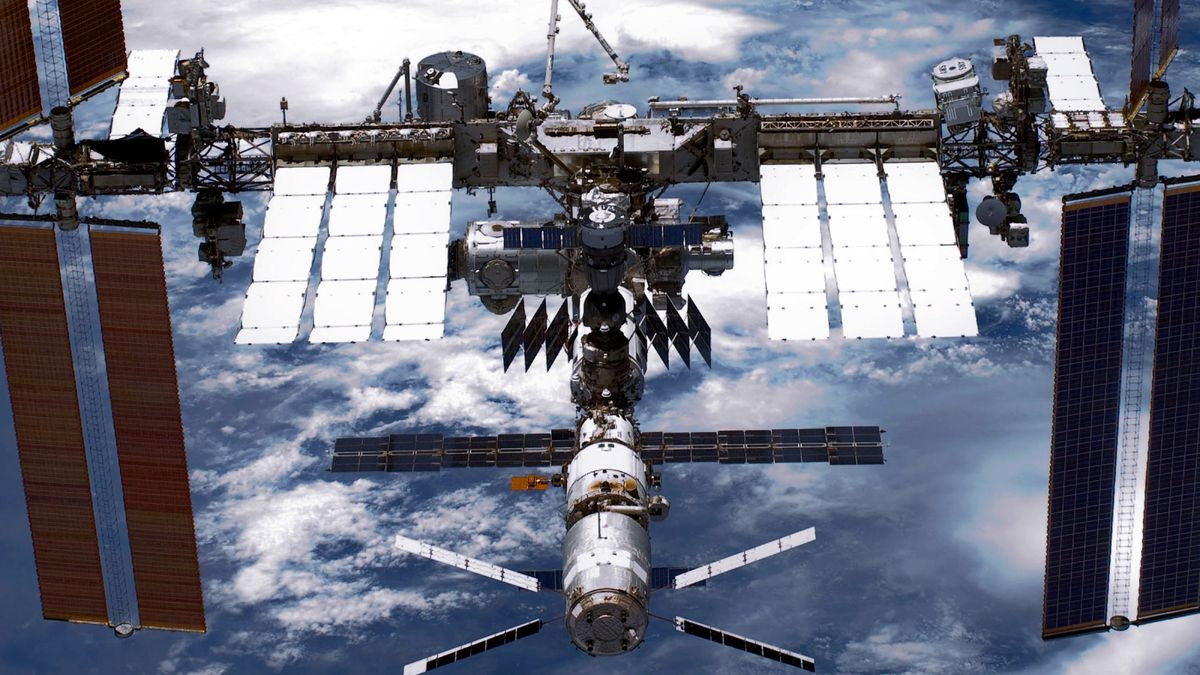Antimatter particles detected on the International Space Station (ISS) may be evidence for unknown physics, new research suggests.
The particles, antimatter versions of helium nuclei, may have been produced by cosmic fireballs, — and physicists can’t explain how those fireballs formed using the Standard Model, the theory which describes the zoo of subatomic particles.
All elementary particles have corresponding antiparticles with opposite electric charges, which annihilate each other on contact. Theory suggests half the matter in the universe should have been antimatter, which would mean the universe would have destroyed itself soon after the Big Bang.
Yet antimatter in the universe is scarce and fleeting. While particle accelerators can generate antiparticles through collisions of protons and electrons, and special detectors observe antiparticles from high-energy space collisions, such as those from supernova explosions, these usually yield only single antiparticles like positrons (antielectrons) and antiprotons.
Related: Mysterious ‘unparticles’ may be pushing the universe apart, new theoretical study suggests
However, about eight years ago, the Alpha Magnetic Spectrometer (AMS-02) aboard the ISS detected around 10 antihelium nuclei. These nuclei consisted of two antiprotons and either one or two antineutrons (for antihelium-3 and antihelium-4 versions, respectively). If confirmed through further analysis, the discovery would challenge the Standard Model of particle physics
According to the Standard Model, making antihelium-4 requires that at least three or four antiprotons and antineutrons be near enough to each other and be moving slowly enough to stick together, study co-author Michael A. Fedderke, a postdoctoral researcher at the Perimeter Institute for Theoretical Physics in Canada, told Live Science in an email. Based on these requirements, one antihelium-4 would be produced for every 10,000 antihelium-3.
“The really interesting thing about the AMS-02 candidate events is that the data seem to be consistent with about one antihelium-4 event for every two to three antihelium-3 events,” Fedderke said., That’s far above what the Standard Model predicts.
In the new study, published June 21 in the journal Physical Review D, the team tried to explain this discrepancy using hypothetical objects called fireballs. These fireballs could result from currently unobserved phenomena, such as the collision of extremely dense clumps of dark matter — a mysterious substance that makes up about 80% of the universe’s matter but does not interact with light so can’t be directly observed.
“A fireball is a dense, energetic region of space containing large numbers of antiparticles,” study co-author Anubhav Mathur, a doctoral student at Johns Hopkins University, told Live Science. “Once formed, it expands at close to the speed of light, releasing antiprotons, antineutrons, and antihelium into the surrounding environment. The antinuclei subsequently travel outward, and some of them reach the Earth where they can be detected.”
The researchers modeled fireballs of various sizes and behavior. They found that if the fireballs were large, “composite” objects made of many dark matter particles, then the amount of antihelium nuclei they produced matches well with the preliminary results detected aboard the ISS, Fedderke said.
While these findings are promising, they are still preliminary and require further validation. Follow-up studies will help determine if their hypothesis is correct.
“On the observational side, we’re looking forward to AMS-02 completing their analysis of their candidate antihelium events, as well as to them taking more data in future which may shed further light on this puzzle,” Fedderke said.
The General AntiParticle Spectrometer (GAPS) project, which will launch a balloon over Antarctica later this year to detect antimatter cosmic rays, including antihelium nuclei, could also shed light on the matter, Fedderke added.














/https://tf-cmsv2-smithsonianmag-media.s3.amazonaws.com/filer_public/d1/82/d18228f6-d319-4525-bb18-78b829f0791f/mammalevolution_web.jpg)






Discussion about this post